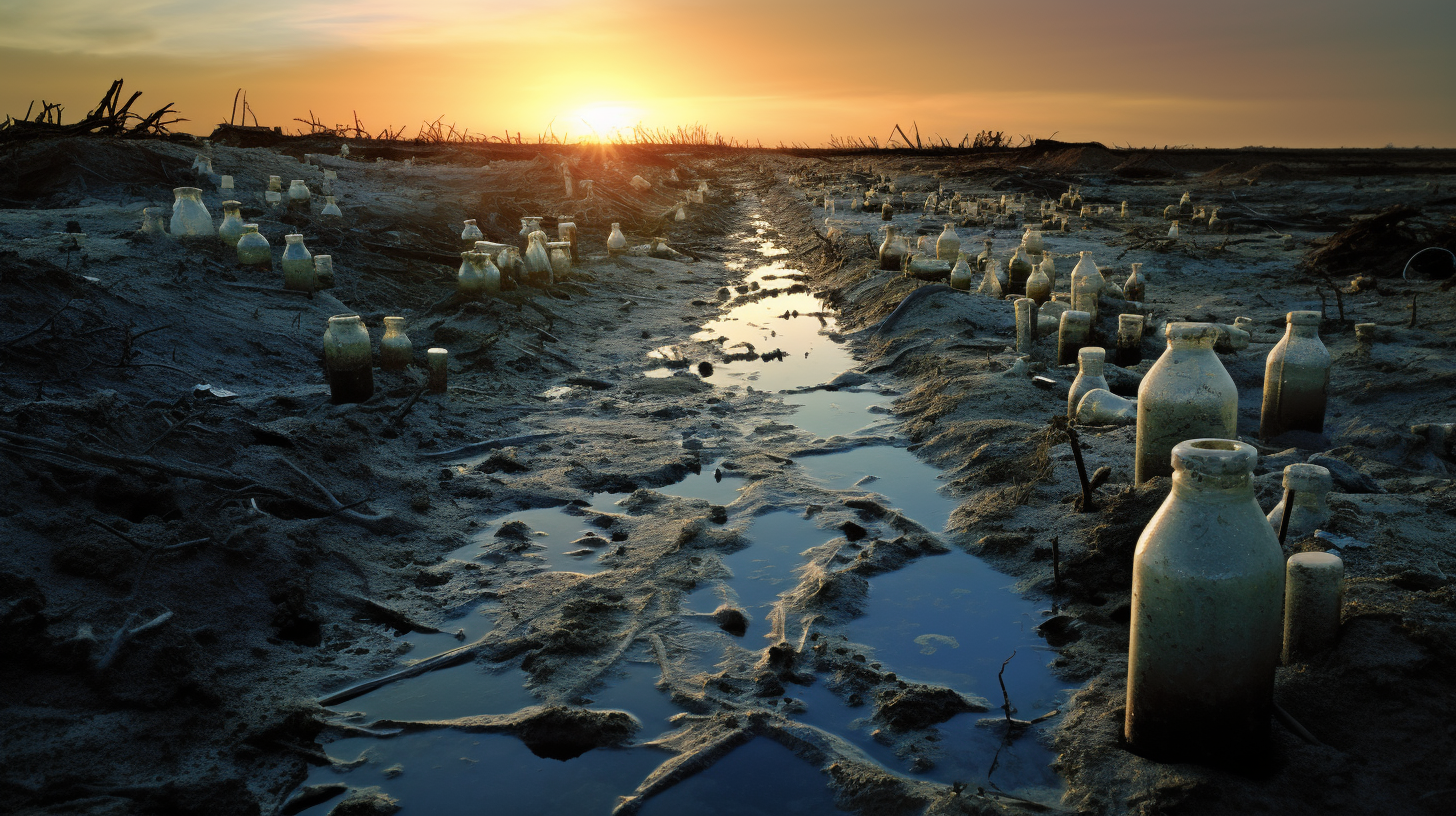They called it the ultimate elixir, the bringer of life, the sustainer of civilizations. But as the lakes and rivers started to resemble the barren deserts that were once thriving eco-systems, water became the currency of conflict. Amidst the corroded pipes and crumbling infrastructures, the remnants of society clung to fragmented memories of a wetter world. What remains in the wake of the Water Wars is a testament to the neglected prophecies of eco-champions who foresaw the mire in which we are now entrenched.
In the ashen shadows of the last reservoirs, communities that once warred over the clear liquid now huddle over muddy puddles, reminiscing of the time when water flowed freely from their taps. Stories circulate among the survivors, stories of the Great Aqueduct that once channeled life into their homes. Yet what stands before them is a husk – a monument to the hubris of a bygone era. The skeletal remains of water towers and desalination plants rise like tombstones, marking the graves of marine sanctuaries and freshwater springs.
The conflicts that erupted over water seem like detached episodes of a surreal saga. But the impacts are viscerally real – decaying infrastructure, contaminated water supplies, and irreparable environmental damage. It was a cascade of desperation and despair as each drop became a contested resource. As nations and neighborhoods turned against each other, the significance of diplomacy and cooperation seemed to evaporate into the thinning atmosphere, dissolving like the last morning mist before the glare of an unforgiving sun.
Despondent voices recount tailspins into anarchy, where water magnates hoarded, communities crumbled, and children learned to siphon moisture from the arid air like barren landscape cacti. The Water Wars didn’t cease; they merely adapted into a somber cadence of enduring scarcity and parched persistence. In this world, rainfall is not met with joy, but regulated with suspicion – each drop harvested, rationed, and, if needs be, fought over with a fervor that could shatter spirits.
Ghost towns smeared on the map, where once bountiful harvests and roaring rivers set the stage for festivals are now muted concertos of cracked earth and silent despair. Visiting the skeletons of these towns is an eerie orchestration of the senses. The sights and sounds drawing a stark contrast between life and survival, as one through the lens of the other.
The echoes of the Water Wars resonate through time, insisting on their continued relevance. Stories of the savagery and desperation serve as a cautionary tale, an unfinished symphony that crescendos with the chilling reality that the wars are not a relic of history, but a persisting prelude to the future. In a world gasping for air, still drenched in the throes of ecological seizures, what remains is a population acutely aware of the thin line between peace and outright oblivion.
Hence, while the world gapes at the bleak aftermath of the Water Wars, turning a blind eye is no longer an option. While the wars have ceased in active combat, the fabric of our ecological coexistence continues to fray. The impact of these wars lingers, environmental refugees continue to roam the lands, and the aching cry for a sustainable life echoes hollow in the ravaged chasms of their former domains.
Understanding the past is pivotal for any semblance of a future. The fight for the last drop of water may have waned, but the battle for redemption burgeons as a quixotic quest in this dystopian reverie. Despite the sunset of hope witnessed in the dregs of our waterways, society somehow trudges forward, perhaps on a fool’s errand for a fragmented oasis waiting underneath the rubble – a final mirage in the desert of our own making.
